All the things it’s essential learn about easy methods to make kimchi! With this small batch recipe, you’ll discover it not that difficult to make good genuine kimchi at residence.
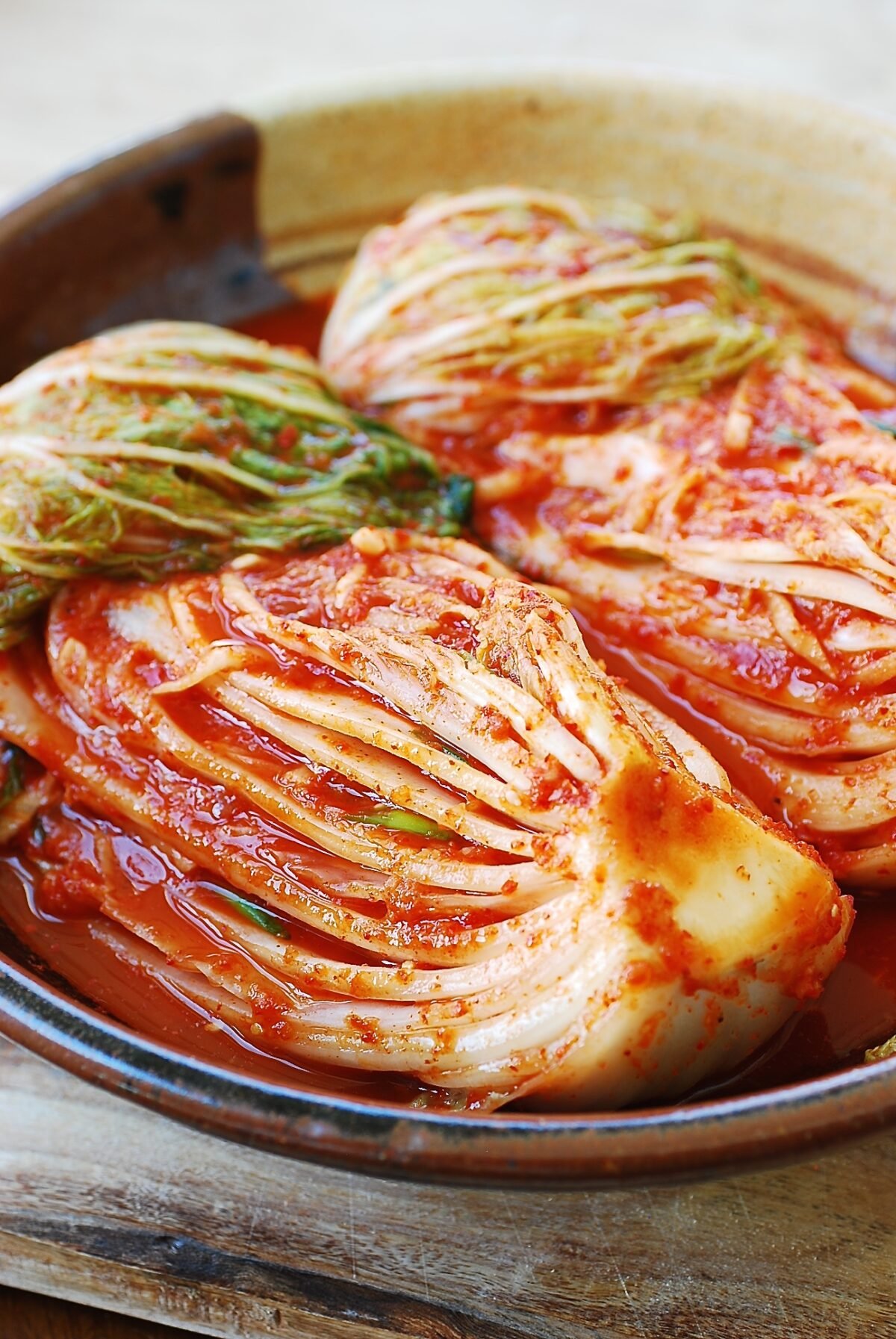
What’s kimchi?
Kimchi (김치) is a collective time period for vegetable dishes which have been salted, seasoned, and fermented. The its historical past goes again to historical occasions. Originated from pickled greens, there are actually a whole lot of kimchi varieties in Korea. You will discover a number of the most typical ones in my 15 straightforward kimchi recipes.
During the last decade or so, Korean kimchi has gained a world recognition as a wholesome probiotic meals. It’s supply of helpful lactic acid micro organism, has wonderful anti-oxidation and anti-cancer results, and helps stop growing old.
This recipe is made with baechu (배추), often called napa cabbage, therefore the identify baechu kimchi. As a result of the cabbage is stored intact at its head, it’s also referred to as pogi kimchi (포기김치). Pogi means a “head” of a vegetable.
In late fall, Korean households make the sort of kimchi in massive amount for his or her kimjang (or gimajang, 김장), an annual kimchi making occasion in preparation for chilly months. I grew up watching my mom do her kimjang utilizing over 100 cabbages along with her buddies within the neighborhood who rotated their schedules to assist one another.
I normally make it with 5 – 10 heads (pogi) of cabbages at a time as a result of we eat it day by day. Additionally, I present common provide to my grown-up kids. Each my mom and mother-in-law did that for us for a very long time, so I’m gladly persevering with the custom.
In Korean houses, there can by no means be an excessive amount of of it. So many Korean dishes are made with well-fermented kimchi, such as jjigae, mandu, bibim guksu, kimchijeon, dubu kimchi, and so on.
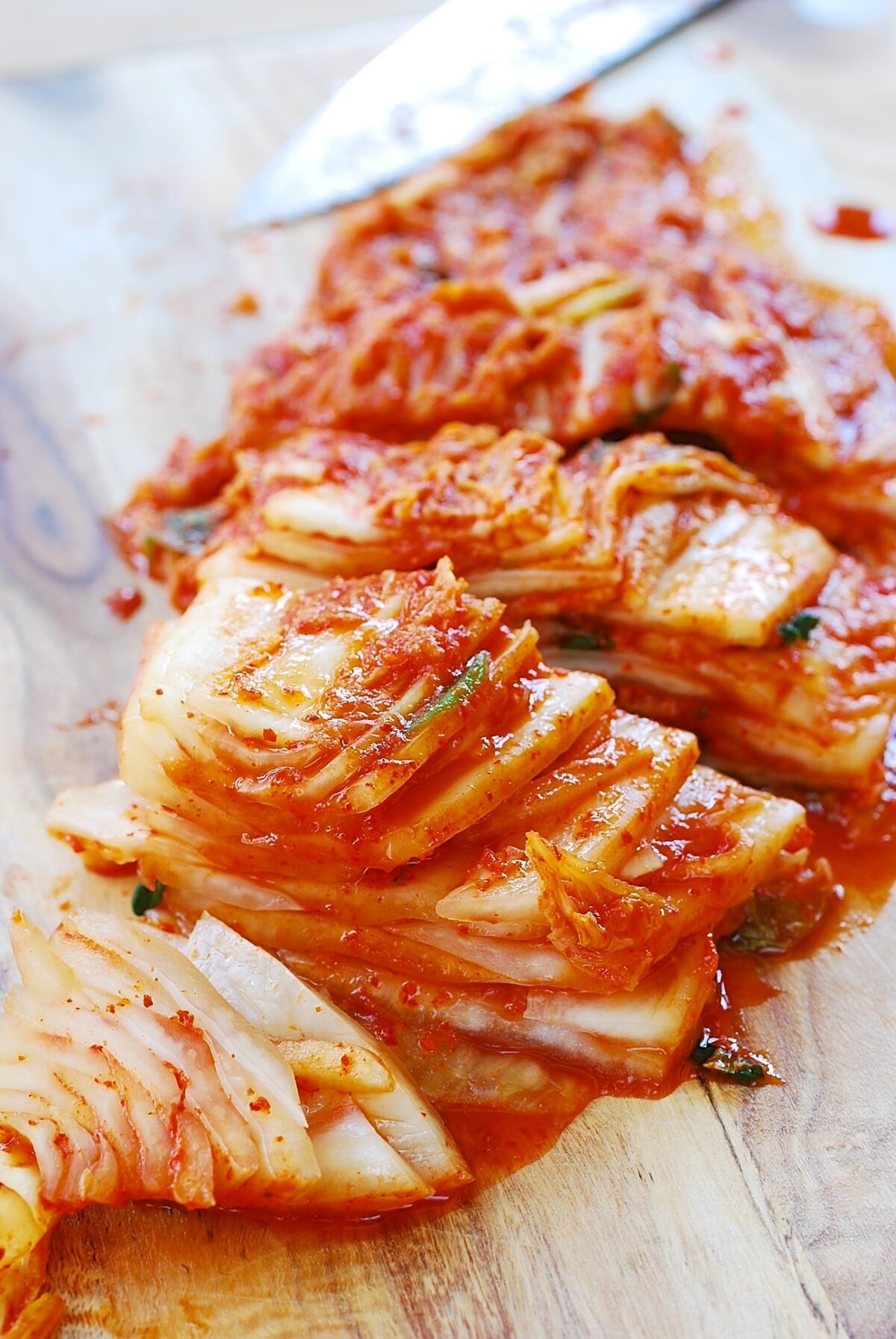
Shopping for napa cabbage (baechu)
For this recipe, it’s greatest to make use of a medium to massive cabbage that weighs round 5 to 5-1/2 kilos with some mild inexperienced outer leaves. When lower, cabbage has a properly straight white half that’s not too thick in addition to vivid yellow inside leaves.
Salt for kimchi
Korean coarse sea salt (cheonilyeom, 천일염) is the perfect to salt the greens to make kimchi. It’s pure salt with a rough texture that’s minimally processed. Generally known as gulgeun-sogeum (굵은소금), which means coarse or thick salt, this salt tastes good with out bitterness, so it helps develop flavors in fermented meals.
Once we first got here to America, Korean sea salt wasn’t obtainable, so we used American desk salt to salt cabbages. You’ll want to use much less (about 1/4 lower than the quantity known as for within the recipe) if utilizing high quality salt.
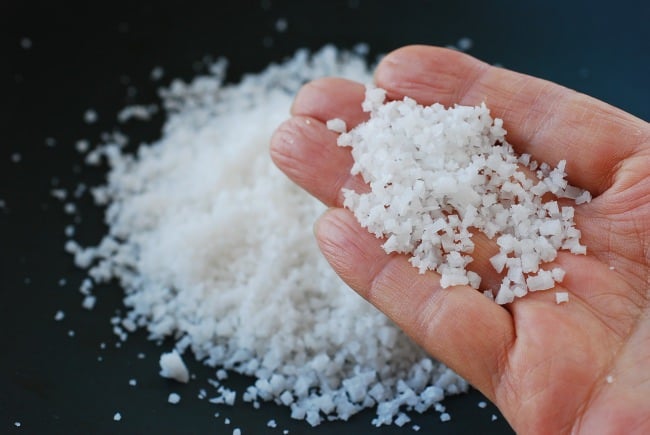
Kimchi seasonings
The style of kimchi varies broadly, relying on the standard, sort and ratio of the seasoning substances. Every Korean family has its personal recipes, typically pushed by the regional flavors of their hometown. I discover myself making it in a different way every time.
Good high quality gochugaru makes a giant distinction in kimchi. Along with gochugaru (고추가루, Korean purple chili pepper flakes), garlic and ginger, kimchi recipes usually name for numerous jeotgal (젓갈, salted seafood) for the distinct pungency and depth of flavors and to help the fermentation course of. Saeujeot (새우젓, salted shrimp) and myulchiaekjeot (멸치액젓, fish sauce made with anchovies) are the most typical ones. Learn extra about these substances in my Korean Pantry Seasoning Elements.
Generally, I additionally use contemporary shrimp which is my mom’s secret ingredient for including additional freshness to the kimchi taste. Should you can’t discover saeujeot in your space, think about using some uncooked shrimp as an alternative.
If you wish to make vegan kimchi, skip shrimps and swap fish sauce with soup soy sauce (gukganjang, 국간장). Or just try my vegan kimchi recipe.
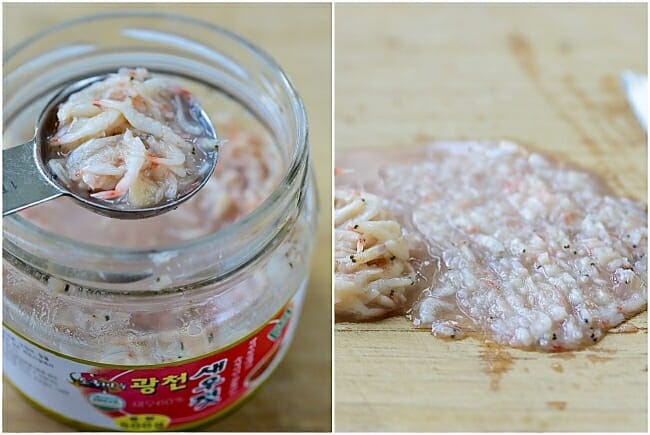
Find out how to make kimchi
That will help you begin making kimchi at residence, I got here up with this recipe utilizing one head of napa cabbage. Begin with one, after which transfer to 2 or 3 by doubling or tripling the recipe.
It usually begins with salting the principle vegetable. For this pogi kimchi, it’s essential lower the entire cabbage in half lengthwise, after which into quarters. Should you’re utilizing 2 small cabbages, chopping in half ought to be sufficient.
Then, completely bathe every cabbage half/quarter within the salt water one after the other. Utilizing the opposite half cup of salt, generously sprinkle salt over the thick white a part of every leaf. This course of makes certain the white elements get evenly salted,
In the meantime, make a kimchi paste by mixing all of the seasoning substances, after which lower the radish into skinny matchsticks and blend properly with the paste. The remaining is straightforward, rub just a little little bit of the radish combine over every cabbage leaf, primarily the white half.
How lengthy does it final?
Though you can begin consuming your kimchi any time, it wants about two weeks within the fridge to completely develop its flavors. It would proceed to age in your fridge and will probably be scrumptious for a few months, when the wholesome micro organism depend is the best. It might final for much longer than that, turning very bitter over time.
Watch easy methods to make it
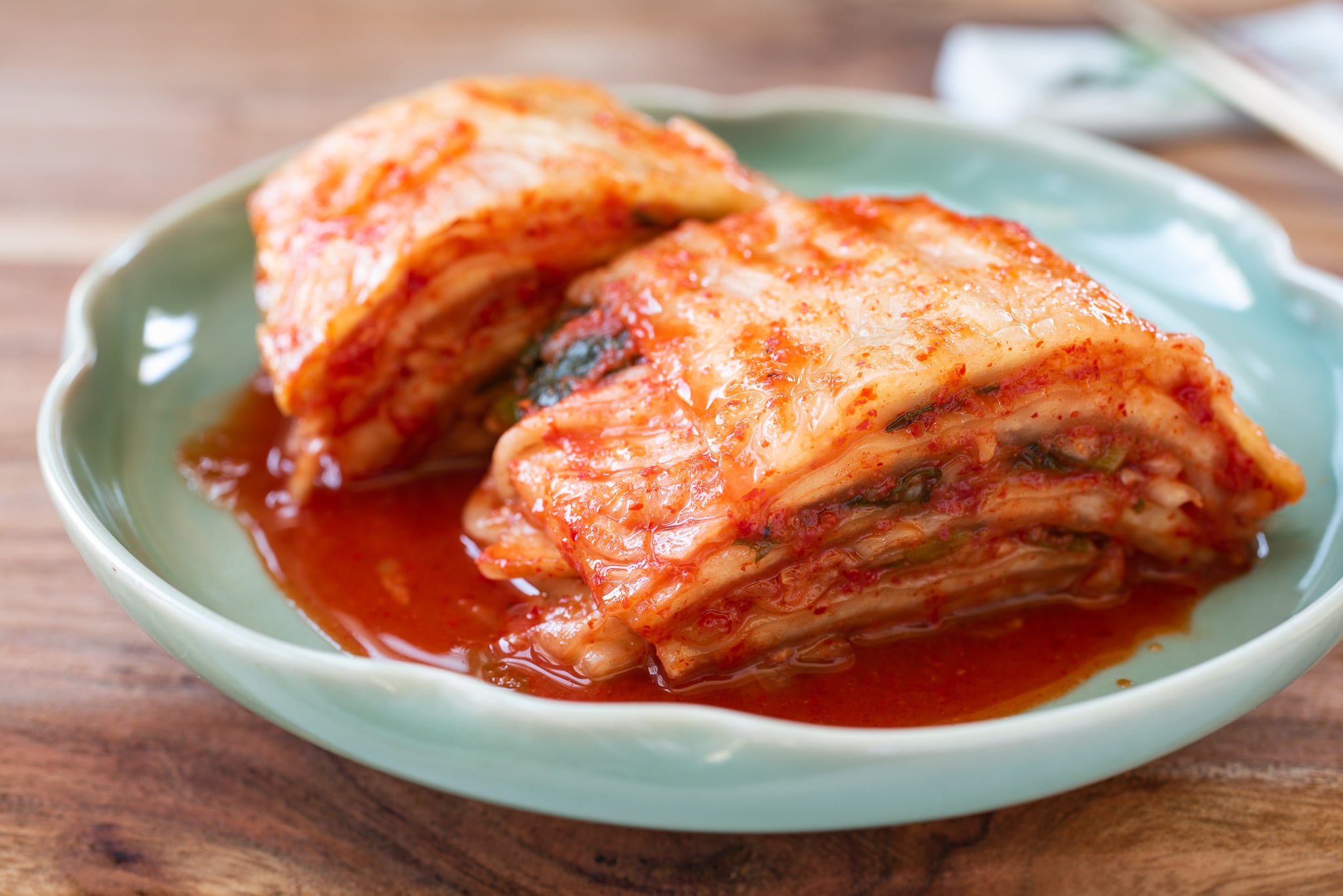
For extra Korean cooking inspirations, observe alongside on YouTube, Pinterest, Twitter, Fband Instagram.
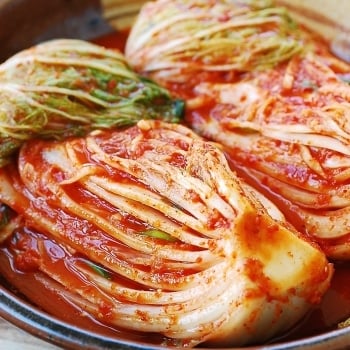

Conventional kimchi (Pogi Kimchi)
Facet Dish
Servings: 24 to 36
Print Recipe
Directions
-
In a big bowl, dissolve 1/2 cup of salt in 5 cups of water. Totally bathe every cabbage quarter within the salt water one after the other, shake off extra water again into the bowl, after which switch to a different bowl.
-
Utilizing the opposite half cup of salt and ranging from the outermost leaf, generously sprinkle salt over the thick white a part of every leaf (just like salting a bit of meat). Attempt to salt all of the cabbage quarters with 1/2 cup salt, however you should use just a little extra if wanted. Repeat with the remainder of the cabbage quarters. Pour the remaining salt water from the primary bowl over the cabbage. Put aside for about 6 – 8 hours, rotating the underside ones to the highest each 2 – 3 hours.
-
In the meantime, make the elective dasima broth by boiling a small piece (2 to three inch sq.) in 1.5 cups of water for five minutes, and funky. Combine the rice flour with 1/2 cup water (or elective dasima broth) and simmer over low warmth, stirring often, till it thickens to a skinny paste, and funky. Yields about 3 – 4 tablespoons.
-
Put together the garlic, ginger and saeujeot. Mix all of the seasoning substances, together with the rice paste and about 1/2 cup water (or the elective dashima broth), and blend properly. Put aside till the gochugaru dissolves barely and turns into pasty.
-
Lower the radish and elective pear into matchsticks (use a mandoline if desired), transferring to a big bowl. Lower the scallions diagonally into about 1-inch lengthy items. Add the ready seasoning combine to the radish, and blend properly by hand. Throw within the scallions, and blend all the pieces evenly. Style just a little bit. It ought to be just a little too salty to eat as is. You’ll be able to add salt, extra salted shrimp or fish sauce, as wanted. Let it sit for about half-hour to permit the flavors to meld properly.
-
Lower off the powerful stem half from every cabbage quarter, leaving sufficient to carry the leaves collectively. Place one cabbage quarter within the bowl with the radish combine. Unfold the radish combine over every leaf, one to 2 tablespoons for big leaves. (Eyeball the stuffing into 4 elements and use one half for every cabbage quarter.)
-
Fold the leaf a part of the cabbage over towards the stem and properly wrap it with the outermost leaf. Place it, lower aspect up, in a jar or hermetic container. Repeat with the remaining cabbages. When you have unfastened massive leaves, you should use them to cowl the highest of the kimchi (see observe 1). As soon as all of the cabbages are within the jar or hermetic container, press down exhausting to take away air pockets. To gather any remaining seasoning, rinse the bowl with 1/2 cup of water (or the remaining elective dasima broth), and add it to the kimchi container. Shut the lid.
-
Go away it out at room temperature for a full day or two. It may be longer, relying on the climate and how briskly you need your kimchi to ripen. Then, retailer within the fridge. (see observe 2)
Notes
- You’ll be able to cowl the highest of the kimchi with massive outer inexperienced leaves (as I did within the video) if obtainable. Some individuals additionally use a plastic wrap to cowl. However, this isn’t completely obligatory, particularly for this small batch of kimchi.
- Though you can begin consuming it any time, kimchi wants about two weeks within the fridge to completely develop the flavors. It maintains nice taste and texture for a number of weeks.
